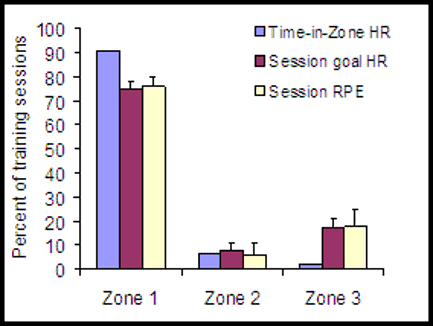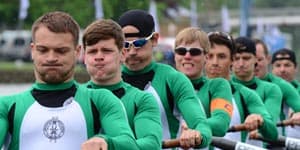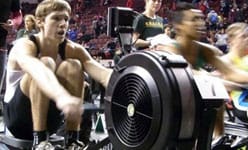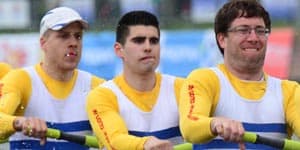It is vital for athletes to record their training in different intensity zones and to analyze zone distribution during the training process. ‘Time in intensity zones’ can easily be used when tracking constant intensity long lasting workouts but when high intensity intervals are introduced, a different approach should be used.
Training in different intensity zones
It is vital for athletes to record their training in different intensity zones (see more from here and here) and to analyze zone distribution during the training process. WHY?
- Different intensities have different impact to body by stimulating different adaptation mechanisms, for example – different energy systems.
- Training too intensively (too much) at high intervals may lead to performance impairment. Adaptation may also be less effective if training too much at moderate intensities (Esteve Lanao et al., 2007; Ingham et al., 2008).
The most common method describing training intensity distribution is ‘time in zone’ method. When using heart rate (HR) monitor, each heartbeat can be recorded and saved into particular zone. Analysis of the data is easy and time effective by desktop or online software.

However, this may lead to miscalculation of training zone distributions if high intensity trainings are used. Athletes tend to spend more time during their interval sessions in warm-up and cool-down at lower intensities that reflects time accumulation to lower intensity zones.
Moreover, it takes some time for heart rate to increase to the actual intensity level if work interval has started, therefore some HR time of the high intensity is lost. On the other hand, it also takes some time for HR to recover after the interval to reflect actual intensity of the recovery.

Seiler & Kjerland (2006) compared different methods for zone intensity quantification by using heart rate (time in zone), target time in zone (time in zone according to training prescription) and session RPE method (athlete indicated „how hard“ the session was).
They found that the most commonly used ‘time in zone’ method significantly underestimates the time spent at high intensities while session RPE and target time approach were similar. Moreover, the last two methods were closely related to lactate concentrations, therefore more precisely indicating the stress level of the body.

In conclusion
Although working very well during constant intensity long lasting workouts, athletes and coaches must be aware that the traditional ‘time in zone’ method underestimates the real time spent at high intensities. This may result in a higher amount of high intensity training that can quickly lead to fatigue and decreases in performance.
Therefore, target time in zone should be preferred if interval sessions are used to reflect the true intensity distributions.
References
- Esteve-Lanao J, San Juan AF, Earnest CP, Foster C, Lucia A. How do endurance runners actually train. Relationship with competitive performance. Med Sci Sports Exerc 2007; 37: 496-504.
- Ingham SA, Carter H, Whyte GP, Doust JH. Physiological and performance effects of low versus mixed-intensity rowing training. Med Sci Sports Exerc 2008; 40: 579-584.
- Seiler KS, Kjerland GO. Quantifying training intensity in elite athletes. Is there evidence for an “optimal” distribution? Scand J Med Sci Sports 2006: 16: 49-56.






